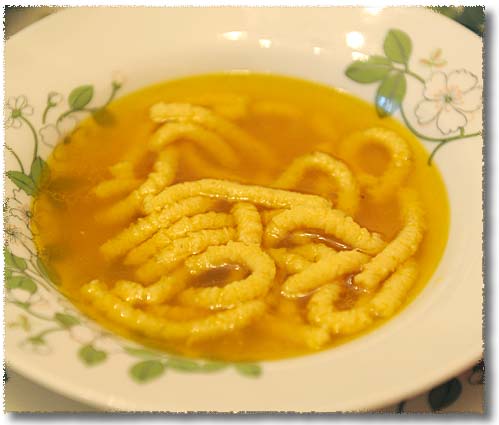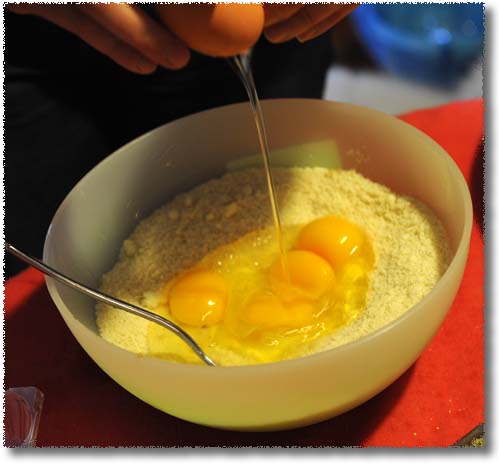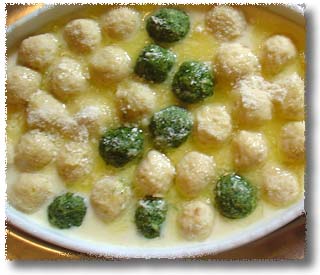Rice and Eggplant Soup, Minestra di Melanzane e Riso
Eggplant is one of the most classic south Italian vegetables, and though it often finds its way into pasta sauces, it’s not common in soups. This recipe is Puglian, and also calls for rice, which, legend has it, was introduced to Italy by the Arabs who once dominated southern Italy.
To serve 4:
- 3/4 cup (150 g) rice
- 3 medium eggplants, stemmed and cubed
- A medium onion
- An egg
- A small bunch parsley, minced
- A dozen fresh basil leaves, shredded
- A quart (1 liter) of vegetable broth
- 1 cup (50 g) freshly grated Parmigiano or mild Romano cheese
- Olive oil
- Salt and freshly ground pepper
Put the cubed eggplant in a colander, sprinkle it abundantly with salt, and let it set for a couple of hours. While it’s setting, chop the onion and the herbs, and heat the broth to a simmer.
Heat a quarter cup of olive oil in a soup pot and sauté the onions and the herb mixture. Rinse the eggplant well and drain it.
When the onions begin to soften, add the diced eggplant and continue cooking for about 10 minutes, stirring frequently.
Stir in the simmering broth and the rice, and cook, stirring occasionally, for about 15 minutes or until the rice is done. While the rice is cooking, lightly beat the egg and mix the cheese into it.
When the rice is done, remove the pot from the fire, briskly stir a ladle of the soup into the egg mixture, and then stir the egg mixture back into the soup. Drizzle with a little more olive oil, check seasoning, and serve.









